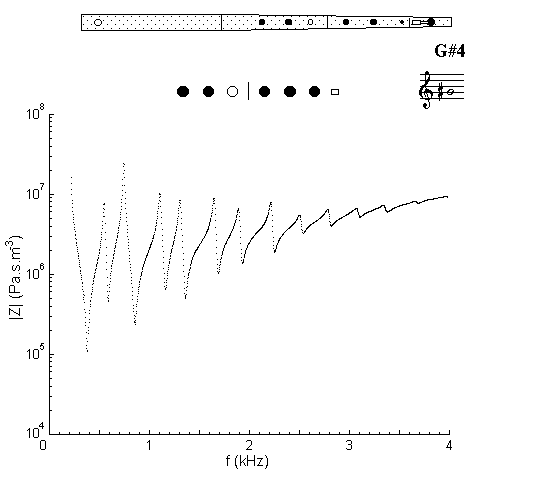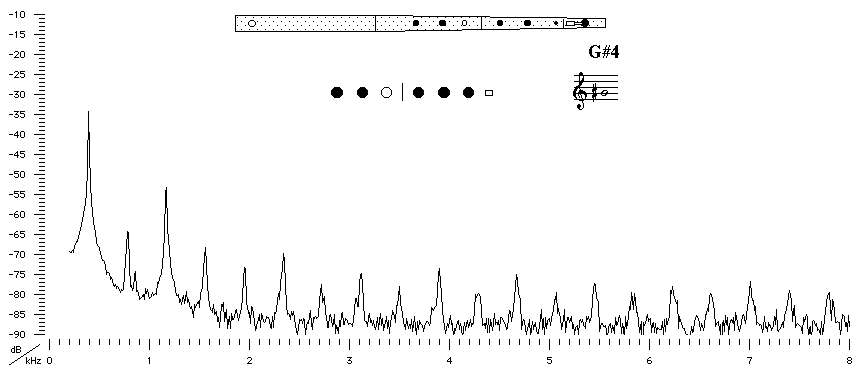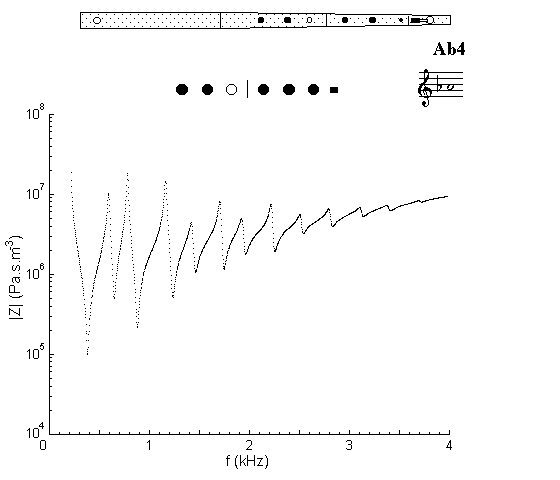| Acoustics of baroque, classical and modern flutes |
baroque flute |
G#4 and Ab4 |

|
Acoustic and Fingering Schematic Non-specialist introduction
to acoustic impedance |
This is a severe cross fingering: four holes closed (including the key) below one open. As a result, even the second minimum is very flat (this fingering cannot be used for G#5) and so the second harmonic in the sound spectrum below is weak, hence a rather dark timbre. (The third harmonic is not so weak, because the fourth minimum is so flat that it supports the third harmonic.) For more detail on cross fingering see that section in the introduction to flute acoustics, or download a brief scientific report on cross fingerings.

Sound spectrum
of a baroque flute played using fingering for G#4.
![]()
![]()
![]()
![]() You can hear G#4
played by Matthew Ridley.
You can hear G#4
played by Matthew Ridley.
Ab4 Fingering |
baroque flute |
 |
Acoustic and Fingering Schematic Non-specialist introduction
to acoustic impedance |
Impedance spectrum of a baroque flute measured at the embouchure hole using fingering for Ab4.
This fingering is like that for G#4, but the opening of the end hole with the key shortens the effective length and thus raises the pitch slightly from G# to Ab. In this context, it is a cross fingering. (The same fingering also plays Bb5, in which context it is considered as having a register hole.)
| Acoustic measurements are available for these flutes - modern B, modern C, classical C, classical D, classical flared, baroque Sound clips are available for modern B, classical flared and baroque |
To compare flutes, it is easiest to open a separate browser window for each instrument. |